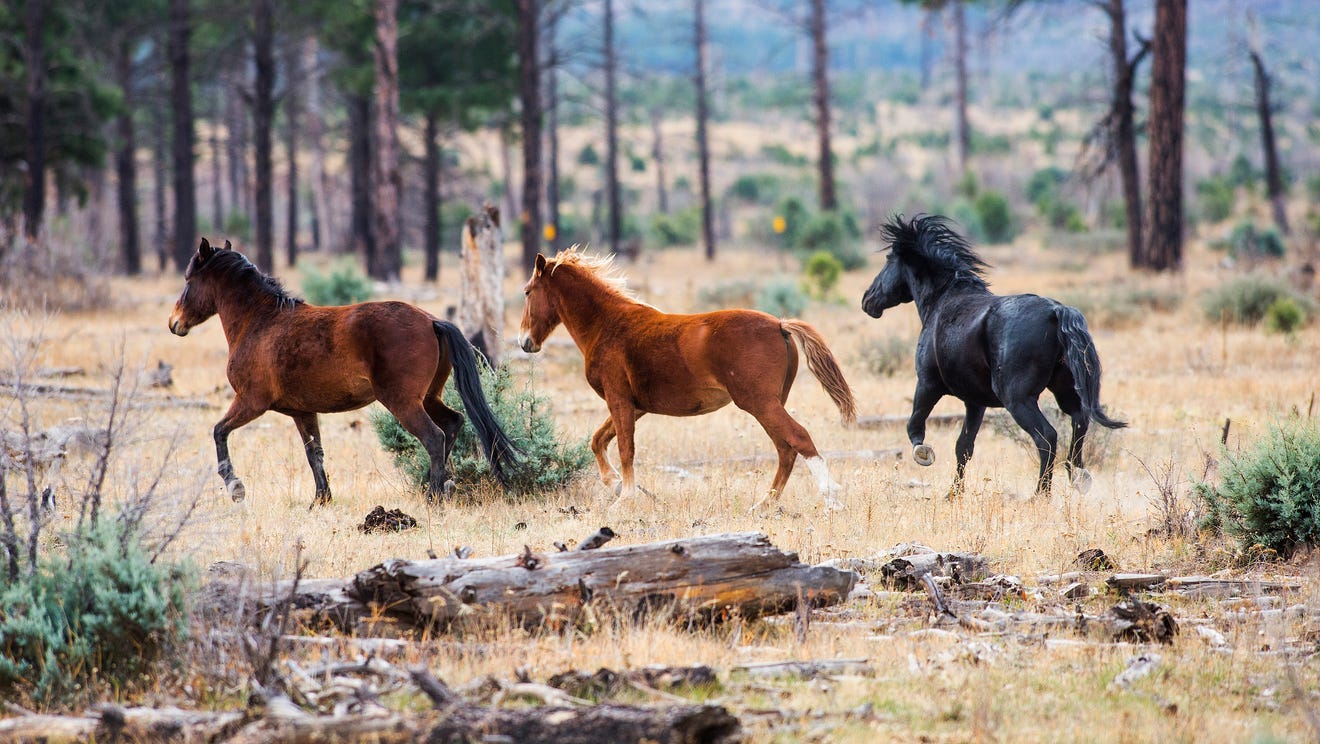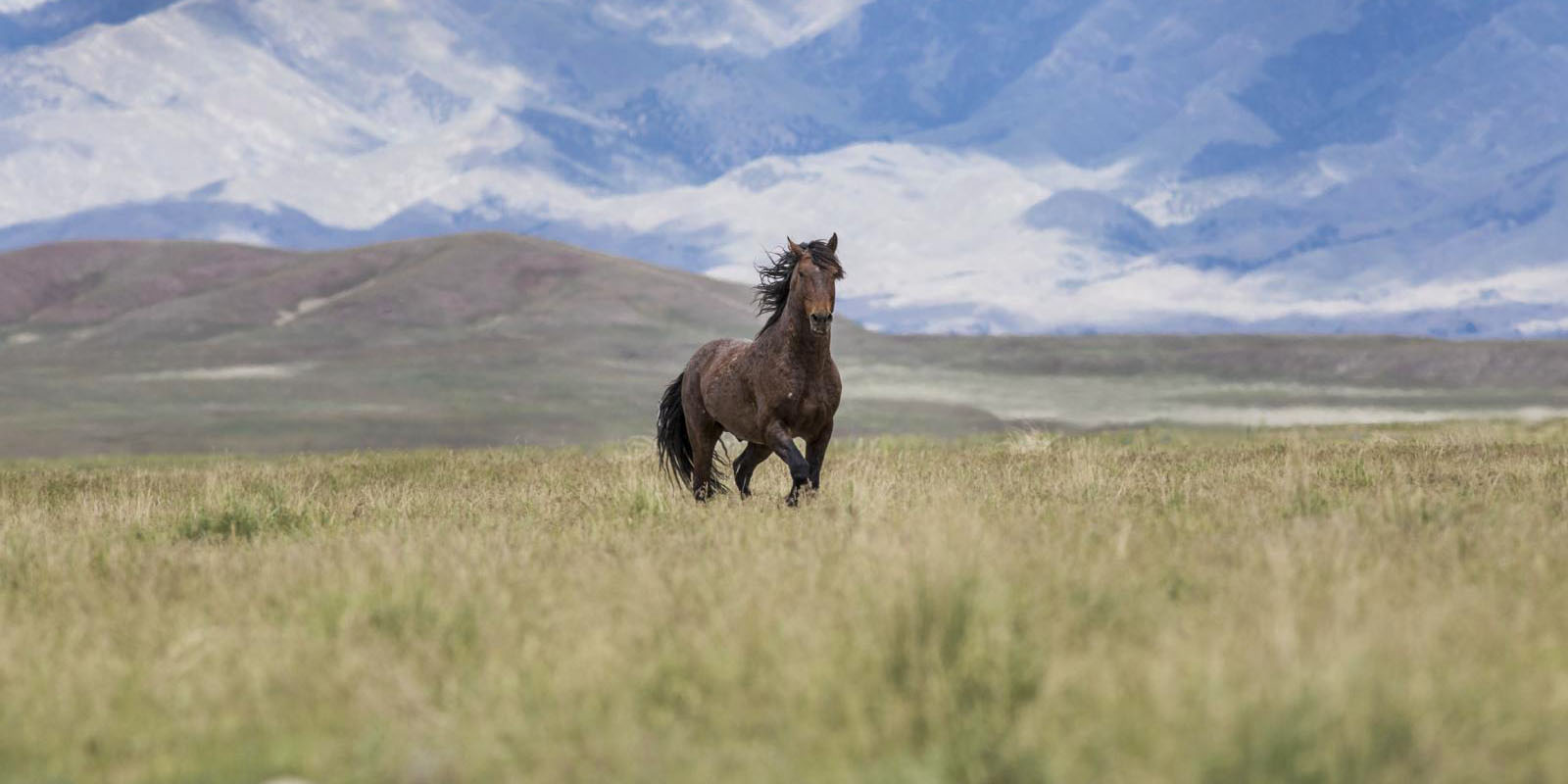Public Can Weigh in With Comments Until April 22. A protest is being planned on the same day.
HEBER, ARIZONA (April 16, 2021) — The Salt River Wild Horse Management Group and the American Wild Horse Campaign have teamed up to oppose the U.S. Forest Service’s management plan for the Heber Wild Horse Territory in the Apache Sitgreaves National Forest. The wild horse groups are urging the public to weigh in against the plan before the deadline on April 22nd. The plan proposes the removal of nearly every wild horse living on the Apache Sitgreaves National Forest inside as well as outside of this last federally protected wild horse territory on Forest Service lands in Arizona.
WHAT: Rally to Save the Heber Wild Horse
Music, Press Conference and March to Forest Service HQ
WHEN: Thursday, April 22, 2021
Event begins at 10 a.m. MDT
WHERE: Tall Timbers Navajo County Park, U.S. Highway 260 and Yates Road, Overgaard, AZ 85933
“The wild horses of northern Arizona have lived on these lands for more than a century, even before the Apache Sitgreaves was a National Forest,” said Simone Netherlands, President of the Salt River Wild Horse Management Group, citing evidence from the AZ State Archives mentioning wild horses in the Heber area in 1907. “They are a proud part of Arizona’s history and heritage, and Arizonans want wild horses humanely managed, not rounded up and stuffed in holding pens. If we want to save these heritage wild horses, Arizonans must speak up in their defense now.”
“The Forest Service plan for the Heber wild horses perpetuates an inhumane and failed approach to wild horse management that costs taxpayers hundreds of millions of dollars and costs wild horses their freedom, families and, often, their lives,” said Suzanne Roy, Executive Director of the American Wild Horse Campaign. “Meanwhile the Forest Service is ignoring more sensible options like humane birth control, which has proved highly successful in programs by the Salt River Wild Horse Management Group and American Wild Horse Campaign in wild herds in Arizona and Nevada.”
Rally Details
The Salt River Wild Horse Management Group is spearheading a rally and press conference.
- 10 AM: Event starts the Tall Timbers Navajo County Park
- 10 AM to 11 AM: Live music at the gazebo
- 11:30 AM: Walk to Forest Service office
- Peaceful protest in front of office
- 2:00 PM: Walk back to the Park
- 2:00 PM to 3 PM: Live music, food trucks and merchandise
- Glass containers prohibited, alcohol not sold, pets allowed if leashed.
Public Comment Details
The public of Arizona and the rest of the U.S. has until April 22, 2021 (Earth Day) to weigh in on the plan. For more information on how to submit comments, click here.
Key elements of the Forest Service plan the groups oppose:
-
Setting the “Appropriate” Management Level (AML) to an unnatural low number -- just 50-104 wild horses on 19,700 acres. Even at high AML, that’s one horse for every 394 acres! This number is far too low to maintain a genetically viable population of wild horses in the Territory. This result will be the roundup of hundreds of wild horses in northern Arizona, from Forest Lakes all the way to Showlow.
-
Failing to protect the Heber wild horses, who have been the target of illegal hunting since 2018. Instead of spending money to eliminate wild horses, the Forest Service must work harder to protect these federally protected equines from harm and to find the person(s) responsible for their illegal killings. Should the Heber population be reduced to just 50 horses in the Forest, this illegal killing of horses could literally decimate it overnight.
-
Failing to treat the Heber wild horses fairly. With the unnaturally small population size, wild horses will be allocated an unfair share of resources within their public land habitat -- just 600 Animal Unit Months of forage per year, while cattle are permitted 5,730 Animal Unit Months to graze within the Territory. Instead, the Forest Service should adjust livestock use in the Territory in order to give wild horses their fair share of resources on public lands designated as their habitat. This reallocation would allow for a larger, more sustainable wild horse population and save taxpayers millions in capture and storage costs for the horses the Forest Service intends to remove from the range.
-
Treating wild horses inhumanely by rounding up hundreds of them, separating them from their families, and sending them to an already overcrowded federal holding facilities. If removals must occur, they should be done exclusively through bait-trapping (no helicopters) and in small numbers over time, to meet adoption demand and ensure that the horses do not end up in undesirable places. By pursuing only small, incremental removals, the Forest Service can avoid adding to the thousands of wild horses already in off-range holding facilities across the country.
The groups are calling for an updated management approach that keeps the wild horses on the public land, provides them with a fair share of forage and water resources, and manages their numbers humanely with PZP fertility control, the immunocontraceptive vaccine utilized in both groups’ successful fertility control programs.
The Salt River Wild Horse Management Group (SRWHMG) is an Arizona non-profit organization established to protect, monitor and scientifically study the Salt River Wild Horses. The SRWHMG has been spearheading the effort to secure lasting protections for this iconic and beloved wild horse herd in the Tonto National Forest. The group partners with the State of Arizona for the humane management of the Salt River herd, including a highly successful fertility control program that has stabilized population growth within its first two years.
The American Wild Horse Campaign (AWHC) is the nation’s leading wild horse advocacy organization, dedicated to defending America’s wild horses and burros to protect their freedom, preserve their habitat, and promote humane standards of treatment. AWHC currently implements the largest wild horse fertility control program in the world for a population of 3,000 state managed free-roaming horses in a 300,000-acre habitat in Northern Nevada.
###


